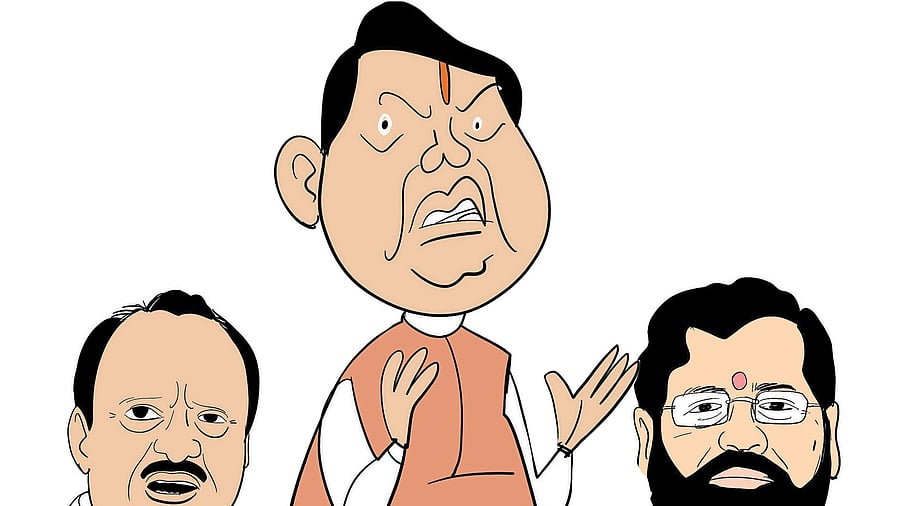
Mahayuti: The Triopoly’s first tightrope year in Maharashtra
As the BJP-led Mahayuti government completes its first year in power, Maharashtra’s political landscape appears more complex and layered than at any point in nearly a decade.
On December 5, 2024, BJP’s Devendra Fadnavis was sworn in as the chief minister for the third time, with Shiv Sena’s Eknath Shinde and NCP’s Ajit Pawar as deputy chief ministers after a power-sharing deal that proved far from frictionless. With three powerful centres of authority – Fadnavis (Deva Bhau), Shinde (Bhai) and Pawar (Dada) – each commanding distinct party structures, regional bases and ambitions, the coalition has often functioned like a political triangle.
Unlike coalitions where chief ministers dominate smaller partners, the Mahayuti demands constant negotiation, ego-balancing and careful power-sharing. The first year showed that stability depends not merely on numbers but on continuous management, accommodation and vigilance. The three leaders frequently disagreed on key issues, and several times Shinde and Pawar flew to New Delhi to seek Union Home Minister Amit Shah’s intervention.
Shinde’s 2022 rebellion reshaped the Shiv Sena, leaving Uddhav Thackeray heading the Shiv Sena-UBT. Ajit Pawar’s dramatic 2023 split from the NCP, with Sharad Pawar leading the NCP-SP, completed the BJP’s project of weakening regional adversaries. The 2024 Assembly results gave the alliance numerical strength and triggered a redistribution of power. Ajit Pawar secured Finance and Planning along with Excise, while Shinde took over Urban Development, Housing, Public Works and Public Undertakings. Both also became guardian ministers for Thane and Pune. The BJP, despite holding fewer ministries than expected, positioned itself as the strategic anchor, with Fadnavis – an astute leader with RSS roots – tasked with keeping allies aligned.
The government’s first year was marked by mistrust. Fund allocation became a recurring flashpoint, with legislators from all three parties alleging delays or selective prioritisation of proposals. This unease deepened suspicions regarding influence and access within the coalition.
Reports indicate frustration within the Shiv Sena over Shinde being overshadowed by both Fadnavis and Pawar. A group of his ministers even boycotted a cabinet meeting over alleged BJP poaching of Shiv Sena leaders in Thane, his stronghold. He raised the issue with Shah. Publicly, however, both Shinde and Pawar insist all is well. Still, Shinde’s political identity – built on the claim that Uddhav Thackeray abandoned Balasaheb’s legacy and the natural Hindutva alliance – appears under strain as he navigates constraints he once criticised.
Pawar’s firm control over finance gave his faction significant leverage, periodically unsettling both the BJP and Shinde-led Sena. It created a new, multi-layered clearance route for major proposals – moving from finance to the Deputy CMs and then to the CM – symbolising bureaucratic congestion and political jockeying. Pawar also courted controversies, including reprimanding a probationary IPS officer and his “no votes, no funds” remark, often prompting the CM to intervene to contain criticism.
The Opposition Maha Vikas Aghadi (MVA) frequently cited the “three power centres” to allege that the government lacked cohesion. Yet the Mahayuti remains intact, bound by political necessity and ideological overlap. But can the coalition transcend constant firefighting and deliver on its promise of stability and development?